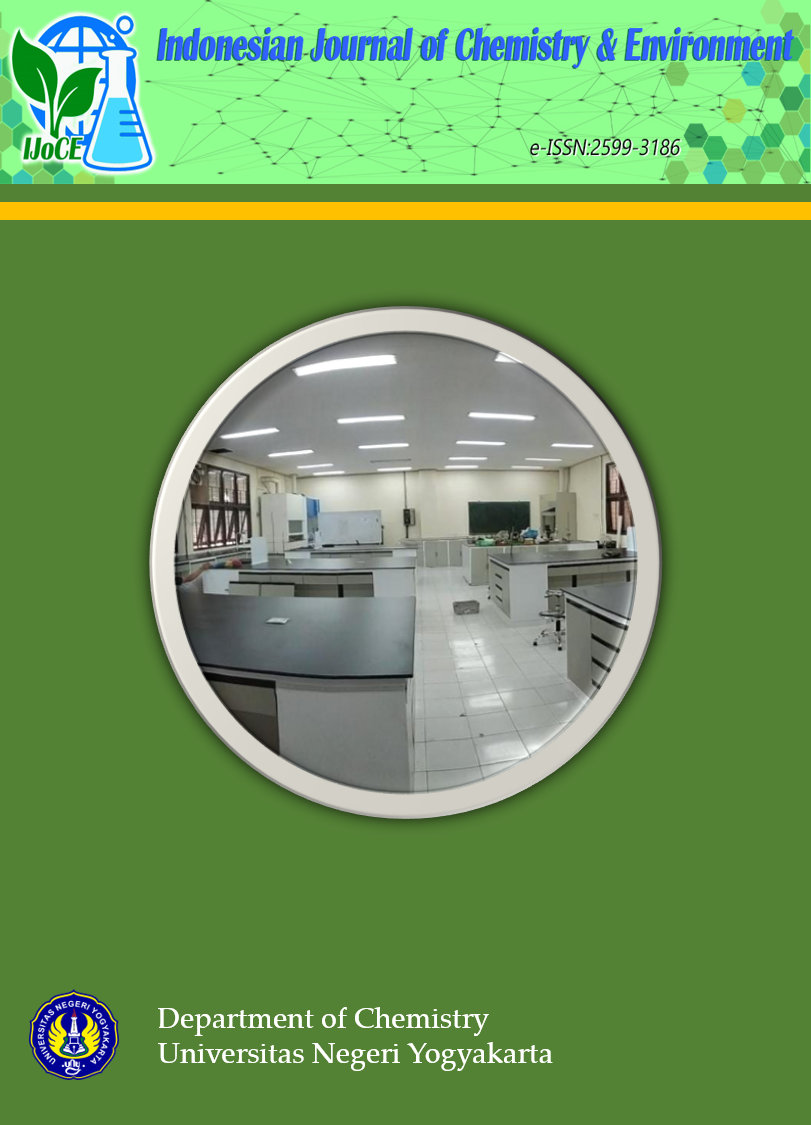Analysis of Cyanide Content on Yams Using Spectrophotometry Methods
DOI:
https://doi.org/10.21831/ijce.v1i1.20784Abstract
References
Chandrasekara, A., & Kumar, T. J. (2016). Roots and Tuber Crops as Functional Foods: A Review on Phytochemical Constituents and Their Potential Health Benefits. International Journal of Food Science, 1-15.
Cho, H., Do, B. K., Shim, S., Kwon, H., Lee, D. H., Nah, A. H., et al. (2013). Determination of Cyanogenic Compounds in Edible Plants by Ion Chromatography. Toxicological Research, 143-147.
Fukushima, A. R., Nicoletti, M., & Rodrigues, A. J. (2016). Cassava Flour: Quantification of Cyanide Content. Food and Nutrition Sciences , 592-599.
Pitschmann, V., Kobliha, Z., & TuÅ¡arová, I. (2011). A Simple Spectrophotometric Determination of Cyanides by P-nitrobenzaldehyde and Tetrazolium Blue. Advances in Military Technology, 19-28.
Poulton, J. E. (1990). Cyanogenesis in Plants. Plant Physiol, 401-405.
Simeonova, F., & Fishbein, L. (2004). Hydrogen Cyanide and Cyanides: Human Health Aspects. Stuttgart, Germany: World Health Organization.
White, W., Arias-Garzon, D., McMahon, J. M., & Sayre, R. T. (1998). Cyanogenesis in Cassava: The Role of Hydroxynitrile Lyase in Root Cyanide Production. Plant Physiology, 1219-1225.
Downloads
Published
How to Cite
Issue
Section
Citation Check
License
Authors who publish with this journal agree to the following terms:
- Authors retain copyright under a Creative Commons Attribution–ShareAlike License (CC BY SA) that allows others to share: copy, and redistribute the material in any medium or format, Adapt: remix, transform, and build upon the material, for any purpose, even commercially.
- Authors are able to enter into separate, additional contractual arrangements for the non-exclusive distribution of the journal's published version of the work (e.g., post it to an institutional repository or publish it in a book), with an acknowledgement of its initial publication in this journal.
- Authors are permitted and encouraged to post their work online (e.g., in institutional repositories or on their website) prior to and during the submission process, as it can lead to productive exchanges, as well as earlier and greater citation of published work.










